#joan de bohun countess of hereford
Text
The Marriage of Henry of Lancaster and Mary de Bohun (1380/1)
From: Chronicles of England, France and Spain and the Surrounding Countries, by Sir John Froissart, Translated from the French Editions with Variations and Additions from Many Celebrated MSS, by Thomas Johnes, Esq; London: William Smith, 1848. *
Humphry, earl of Hereford and Northampton, and constable of England, was one of the greatest lords and landholders in that country; for it was said, and I, the author of this book, heard it when I resided in England, that his revenue was valued at fifty thousand nobles a-year. From this earl of Hereford there remained only two daughters as his heiresses; Blanche the eldest, and Isabella** her sister. The eldest was married to Thomas of Woodstock, earl of Buckingham. The youngest was unmarried, and the earl of Buckingham would willing have had her remain so, for then he would have enjoyed the whole of the earl of Hereford’s fortune. Upon his marriage with Eleanor, he went to reside at his handsome castle of Pleshy, in the county of Essex, thirty miles from London, which he possessed in right of his wife. He took on himself the tutelage of his sister-in-law, and had her instructed in doctrine; for it was his intention she should be professed a nun of the order of St. Clare***, which had a very rich and large convent in England. In this manner was she educated during the time the earl remained in England, before his expedition into France. She was also constantly attended by nuns from this convent, who tutored her in matters of religion, continually blaming the married state. The young lady seemed to incline to their doctrine, and thought not of marriage.
Duke John of Lancaster, being a prudent and wise man, foresaw the advantage of marrying his only son Henry, by his first wife Blanche, to the lady Mary: he was heir to all the possessions of the house of Lancaster in England, which were very considerable. The duke had for some time considered he could not choose a more desirable wife for his son than the lady who was intended for a nun, as her estates were very large, and her birth suitable to any rank; but he did not take any steps in the matter until his brother of Buckingham had set out on his expedition to France. When he had crossed the sea, the duke of Lancaster had the young lady conducted to Arundel castle; for the aunt of the two ladies was the sister of Richard, earl of Arundel, one of the most powerful barons of England.**** This lady Arundel, out of complaisance to the duke of Lancaster, and for the advancement of the young lady, went to Pleshy, where she remained with the countess of Buckingham and her sister for fifteen days. On her departure from Pleshy, she managed so well that she carried with her the lady Mary to Arundel, when the marriage was instantly consummated between her and Henry of Lancaster. During their union of twelve years, he had by her four handsome sons, Henry, Thomas, John and Humphrey, and two daughters, Blanche and Philippa.
The earl of Buckingham, as I said, had not any inclination to laugh when he heard these tidings; for it would not be necessary to divide an inheritance which the considered wholly as his own, excepting the constableship which was continued to him. When he learnt that his brothers had all been concerned in this matter, he became melancholy, and never after loved the duke of Lancaster as he had hitherto done.^
Notes:
* Johnes notes that this is from "only one of [his] mss. [manuscripts] and not in any printed copy". Chris Given-Wilson (Henry IV, Yale University Press, 2016): "This story comes from a variant manuscript of Froissart's chronicles used by Johnes, but subsequently destroyed by fire."
** Johnes: "Froissart mistakes: their names were Eleanor and Mary." Presumably, Johnes then corrects their names for the rest of the narrative?
*** Jennifer C. Ward (translator and editor), Women of the English Nobility and Gentry: 1066-1500 (Manchester Medieval Sources, Manchester University Press, 1995): "This is probably a reference to the convent of the Minoresses outside Aldgate in London where Isabella, daughter of Thomas and Eleanor, later became a nun."
**** Ward: "Joan de Bohun, Mary’s mother, was the sister of Richard FitzAlan, earl of Arundel." Given-Wilson argues the role Froissart assigns to Mary's aunt was actually played by Joan.
^ The veracity of Froissart's account has tended to be questioned, with some historians generally concluding there was probably some truth, mostly revolving around the falling out between John of Gaunt and Thomas of Woodstock over the marriage. The secretive nature of it is almost certainly untrue, given Gaunt had received a royal grant for Mary's marriage. Given-Wilson:
Froissart claimed that ‘the marriage was instantly consummated’, but this was precipitate. He also got several other details of the story wrong, such as calling the two sisters Blanche and Isabel and saying that it was their ‘aunt’ who carried Mary away from Pleshey, but the essentials of his story are corroborated by other sources and undoubtedly correct. Countess Joan was complicit in the plot, presumably hoping to give her daughter a life outside the convent. She probably commissioned a pair of illuminated psalters for the marriage.
The psalters were probably made by the de Bohun-sponsored workshop at Pleshey, one of Woodstock's principle residences. It's possible, presumably, that Joan commissioned them after the wedding but if they were commissioned before/finished by the time of the wedding, it's hard to imagine that Woodstock's household were entirely unaware that a move was being made to marry Mary to Henry.
#mary de bohun#henry iv#jean froissart#joan de bohun countess of hereford#eleanor de bohun duchess of gloucester#thomas of woodstock duke of gloucester#john of gaunt#primary source#froissart's chronicles
8 notes
·
View notes
Quote
Joan was rewarded with grants and privileges from the Crown, mostly under Henry IV and Henry V although she received licences to hunt in the king’s forests and parks in 1392 and 1395 from Richard II. She may well have enjoyed hunting; Henry V in 1414 granted her the right to hunt in Hatfield Forest. More valuable were grants involving property, such as John Holland’s London house and, temporarily, Hadleigh castle in 1400; the right to live in Rochester castle and to be responsible for its custody in the absence of Sir William Darundell, in 1399; and Leeds castle in Kent in 1414. Not all grants were permanent; in 1401 Joan was to hold the patronage of the hospital of St. Katherine by the Tower of London for as long as there was no queen.
Jennifer C. Ward, "Joan de Bohun, Countess of Hereford, Essex and Northampton, c. 1370-1419: family, land and social networks", Essex Archaeology and History, vol. 32, 2001
#joan fitzalan countess of hereford#henry iv#henry v#richard ii#she does seem to have taken on the roles of a quasi queen#in the court of henry iv (at least until he married joan of navarre)#rebecca holdorph notes she was referred to as the king's mother#though holdorph argues that joan took on roles henry's still-living stepmother - katherine swynford - was uninterested in#whereas it's more likely imo that katherine might have been in poor health (she died in 1403 vs joan who died in 1419)#or considered an inappropriiate or awkward figure for that role because of her scandalous past#and of course joan was the biological grandmother of henry's children and heirs when katherine swynford wasn't
11 notes
·
View notes
Text
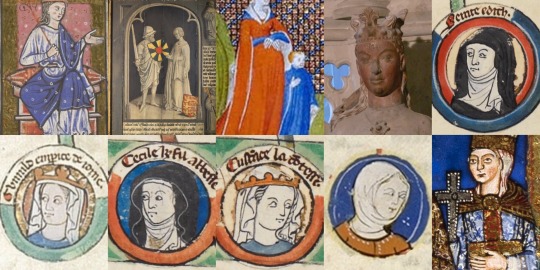
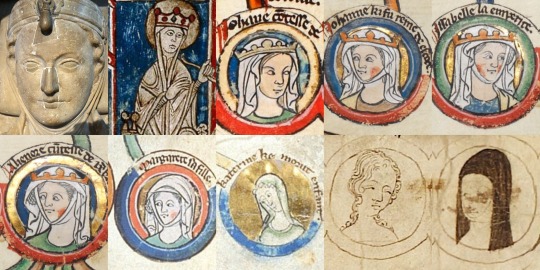
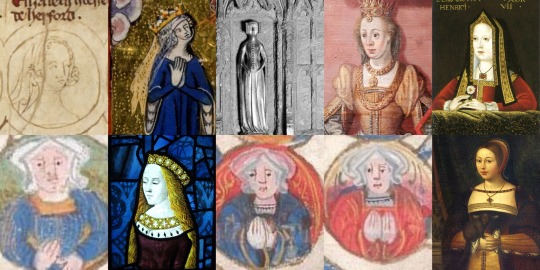

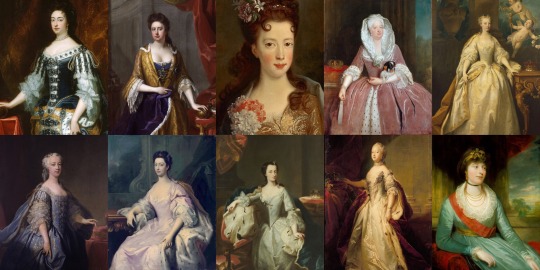

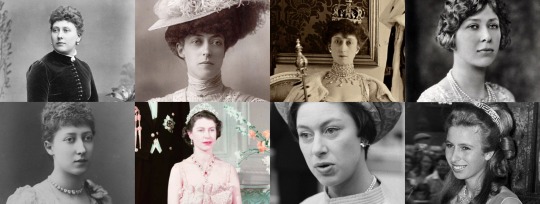
Every English Princess Ever
You’ve heard of Every Queen of England Ever, now I present to you another product that proves I have way too much time on my hands! If you notice any mistakes, please point them out to me kindly. I am sorry I do not know everything, but there is no reason to be rude. 😁
Æthelswith - Daughter of Æthelwulf and his first wife Osburh. She married King Burgred of Mercia in 853, making her the Queen of Mercia.
Æthelflæd - Daughter of Alfred the Great and Ealhswith. When her husband Æthelred, Lord of Mercians died in 911, she became Lady of the Mercians, and reigned for seven years.
Æthelgifu - Daughter of Alfred the Great and Ealhswith. When Alfred founded Shaftesbury Abbey in 890, he made her its first abbess.
Ælfthryth - Daughter of Alfred the Great and Ealhswith. Her marriage to Baldwin II, Count of Flanders made her Countess of Flanders.
Eadgifu - Daughter of Edward the Elder and his second wife Ælfflæd. She was Queen of West Francia by her marriage to Charles III.
Eadhild - Daughter of Edward the Elder and his second wife Ælfflæd. She married Hugh, Duke of the Franks in 937.
Eadgyth - Daughter of Edward the Elder and his second wife Ælfflæd. She married Otto in 930, who became Otto I, King of Germany in 936, also making her Queen of Germany.
Eadburh - Daughter of Edward the Elder and his third wife Eadgifu. She lived her life as a nun.
Godgifu - Daughter of Æthelred the Unready and his second wife Emma of Normandy. Her marriage to Eustace II, Count of Boulogne made her Countess of Boulogne.
Gunhilda - Daughter of Cnut the Great and his second wife Emma of Normandy. She became Queen of Germany when she married Henry III.
Gytha - Daughter of Harold II and Edith Swanneck. She was Princess of Rus from her marriage to Vladimir II Monomakh.
Adeliza - Daughter of William the Conqueror and Matilda of Flanders.
Cecilia - Daughter of William the Conqueror and Matilda of Flanders. She was entered into the Abbey of the Holy Trinity of Caen at a young age, and became Abbess in 1112.
Constance - Daughter of William the Conqueror and Matilda of Flanders. She became Duchess of Brittany when she married Alan IV, Duke of Brittany.
Adela - Daughter of William the Conqueror and Matilda of Flanders. She was Countess of Blois by her marriage to Stephen, Count of Blois, and was regent of Blois two times.
Empress Matilda - Daughter of Henry I and Matilda of Scotland. She became Holy Roman Empress in 1114, and acted as Queen of England from 1141 to 1148, but was disputed.
Marie I - Daughter of Stephen and Matilda I, Countess of Boulogne. When her brother William I, Count of Boulogne died childless in 1159, Marie succeeded him as the Countess of Boulogne.
Matilda - Daughter of Henry II and Eleanor of Aquitaine. She was Duchess of Saxony and Bavaria from her marriage to Henry the Lion.
Eleanor - Daughter of Henry II and Eleanor of Aquitaine. She became Queen of Castile and Toledo when she married Alfonso VIII.
Joan - Daughter of Henry II and Eleanor of Aquitaine. She was Queen of Sicily by her marriage to William II until his death in 1189, and became Countess of Toulouse when she married Raymond VI in 1196.
Joan - Daughter of John and Isabella of Angoulême. She was Queen of Scotland by her marriage to Alexander II.
Isabella - Daughter of John and Isabella of Angoulême. She was Holy Roman Empress and Queen of Sicily and Germany by her marriage to Frederick II.
Eleanor - Daughter of John and Isabella of Angoulême. She was Countess of Pembroke by her first marriage to William Marshal, 2nd Earl of Pembroke, and Countess of Leicester by her second marriage to Simon de Montfort, 6th Earl of Leicester.
Margaret - Daughter of Henry III and Eleanor of Provence. She was Queen of Scotland by her marriage to Alexander III.
Beatrice - Daughter of Henry III and Eleanor of Provence. (Her wikipedia says she was Countess of Richmond, which I’m not sure is true or not. Her husband was the Duke of Brittany, but it is possible she somehow inherited the title in her own right).
Katherine - Daughter of Henry III and Eleanor of Provence. She passed away at the age of three.
Eleanor - Daughter of Edward I and Eleanor of Castile. She was Countess of Bar by her marriage to Henry III, Count of Bar.
Joan of Acre - Daughter of Edward I and Eleanor of Castile. She was Countess of Hertford and Gloucester by her first marriage to Gilbert de Clare, 7th Earl of Gloucester and 6th Earl of Hertford.
Margaret - Daughter of Edward I and Eleanor of Castile. She was Duchess of Brabant, Lothier and Limburg by her marriage to John II.
Mary of Woodstock - Daughter of Edward I and Eleanor of Castile. She was a nun at Amesbury Priory.
Elizabeth of Rhuddlan - Daughter of Edward I and Eleanor of Castile. She was Countess of Holland by her first marriage to John I, and Countess of Hereford by her second marriage to Humphrey de Bohun, 4th Earl of Hereford.
Eleanor of Woodstock - Daughter of Edward II and Isabella of France. She was Duchess of Guelders by her marriage to Reginald II, and was regent of Guelders while her son was still young.
Joan of the Tower - Daughter of Edward II and Isabella of France. She got her name from being born in the Tower of London. Joan was Queen of Scotland by her marriage to David II.
Isabella - Daughter of Edward III and Philippa of Hainault. She was Countess of Bedford and Lady of Coucy by her marriage to Enguerrand VIII, and was made a Lady of the Garter in 1376.
Joan - Daughter of Edward III and Philippa of Hainault. She died during the Black Death at the age of fourteen.
Mary of Waltham - Daughter of Edward III and Philippa of Hainault. She was Duchess of Brittany by her marriage to John IV, Duke of Brittany, and was made a Lady of the Garter in 1378. She died young at the age of sixteen.
Margaret of Windsor - Daughter of Edward III and Philippa of Hainault. She was Countess of Pembroke by her marriage to John Hastings, 2nd Earl of Pembroke. Margaret died young at the age of fifteen.
Blanche of Lancaster - Daughter of Henry IV and Mary de Bohun. She was Electress Palatine by her marriage to Louis III, Electress Palatine.
Philippa of Lancaster - Daughter of Henry IV and Mary de Bohun. She was Queen of Denmark, Sweden and Norway by her marriage to Eric III, VIII & XIII.
Elizabeth of York - Daughter of Edward IV and Elizabeth Woodville. She was Queen of England by her marriage to Henry VII.
Mary of York - Daughter of Edward IV and Elizabeth Woodville. She died at the age of fourteen.
Cecily of York - Daughter of Edward IV and Elizabeth Woodville. She was First Lady of the Bedchamber to her sister, Elizabeth of York, from 1485 to 1487. Cecily was Viscountess Welles by her marriage to John Welles, 1st Viscount Welles.
Margaret of York - Daughter of Edward IV and Elizabeth Woodville. She died at just eight months old.
Anne of York - Daughter of Edward IV and Elizabeth Woodville. She was First Lady of the Bedchamber to her sister, Elizabeth of York, from 1487 to 1494.
Catherine of York - Daughter of Edward IV and Elizabeth Woodville. She was Countess of Devon by her marriage to William Courtenay, 1st Earl of Devon.
Bridget of York - Daughter of Edward IV and Elizabeth Woodville. She was a nun at Dartford Priory.
Margaret Tudor - Daughter of Henry VII and Elizabeth of York. She was Queen of Scotland by her marriage to James IV of Scotland.
Elizabeth Tudor - Daughter of Henry VII and Elizabeth of York. She died at the age of three.
Mary Tudor - Daughter of Henry VII and Elizabeth of York. She was Queen of France by her first marriage to Louis XII of France, and Duchess of Suffolk by her second marriage to Charles Brandon, 1st Duke of Suffolk.
Mary I - Daughter of Henry VIII and Catherine of Aragon. She was Queen of England from 1553 to 1558, and Queen of Spain by her marriage to Philip II of Spain.
Elizabeth I - Daughter of Henry VIII and Anne Boleyn. She was Queen of England from 1558 to 1603.
Elizabeth Stuart - Daughter of James VI & I and Anne of Denmark. She was Electress Palatine and Queen of Bohemia by her marriage to Frederick V.
Margaret Stuart - Daughter of James VI & I and Anne of Denmark. She died at the age of one year old.
Mary Stuart - Daughter of James VI & I and Anne of Denmark. She died at the age of two years old.
Sophia Stuart - Daughter of James VI & I and Anne of Denmark. She lived for just one day.
Mary - Daughter of Charles I and Henrietta Maria. She was Princess of Orange and Countess of Nassau by her marriage to William II, Prince of Orange.
Elizabeth Stuart - Daughter of Charles I and Henrietta Maria. She died at the age of fourteen.
Anne Stuart - Daughter of Charles I and Henrietta Maria. She died at the age of three.
Henrietta - Daughter of Charles I and Henrietta Maria. She was Duchess of Orléans by her marriage to Philippe I, Duke of Orléans.
Mary II - Daughter of James II & VII and Anne Hyde. She was Queen of England from 1689 to 1694.
Anne - Daughter of James II & VII and Anne Hyde. She was Queen of England and Great Britain from 1702 to 1714.
Louisa Maria Stuart - Daughter of James II & VII and Mary of Modena. She died at the age of nineteen.
Sophia Dorothea of Hanover - Daughter of George I and Sophia Dorothea of Celle. She was Queen of Prussia and Electress Brandenburg by her marriage to Frederick William I of Prussia.
Anne - Daughter of George II and Caroline of Ansbach. She was Princess of Orange by her marriage to William IV, Prince of Orange.
Amelia of Great Britain - Daughter of George II and Caroline of Ansbach.
Caroline Elizabeth of Great Britain - Daughter of George II and Caroline of Ansbach.
Mary of Great Britain - Daughter of George II and Caroline of Ansbach. She was Landgravine of Hesse-Kassel by her marriage to Frederick II, Landgrave of Hesse-Kassel.
Louise of Great Britain - Daughter of George II and Caroline of Ansbach. She was Queen of Denmark and Norway by her marriage to Frederick V of Denmark.
Charlotte - Daughter of George III and Charlotte of Mecklenburg-Strelitz. She was Duchess, Electress and Queen of Württemberg by her marriage to Frederick I of Württemberg.
Augusta Sophia - Daughter of George III and Charlotte of Mecklenburg-Strelitz.
Elizabeth - Daughter of George III and Charlotte of Mecklenburg-Strelitz. She was Landgravine of Hesse-Homburg by her marriage to Frederick VI, Landgrave of Hesse-Homburg.
Mary - Daughter of George III and Charlotte of Mecklenburg-Strelitz. She was Duchess of Gloucester and Edinburgh by her marriage to Prince William Frederick, Duke of Gloucester and Edinburgh.
Sophia - Daughter of George III and Charlotte of Mecklenburg-Strelitz.
Amelia - Daughter of George III and Charlotte of Mecklenburg-Strelitz.
Charlotte of Wales - Daughter of George IV and Caroline of Brunswick. She was their only child, and died before both of them.
Charlotte Augusta Louisa of Clarence - Daughter of William IV and Adelaide of Saxe-Meiningen. She died shortly after birth.
Elizabeth Georgiana Adelaide of Clarence - Daughter of William IV and Adelaide of Saxe-Meiningen. She died shortly after birth.
Victoria - Daughter of Queen Victoria and Prince Albert. She was German Empress and Queen of Prussia by her marriage to Frederick III, German Emperor.
Alice - Daughter of Queen Victoria and Prince Albert. She was Grand Duchess of Hesse and Rhine by her marriage to Louis IV, Grand Duke of Hesse.
Helena - Daughter of Queen Victoria and Prince Albert. She was Princess of Schleswig-Holstein by her marriage to Prince Christian of Schleswig-Holstein.
Louise - Daughter of Queen Victoria and Prince Albert. She was Duchess of Argyll and Viceregal of Canada by her marriage to John Campbell, 9th Duke of Argyll.
Beatrice - Daughter of Queen Victoria and Prince Albert. She was Princess of Battenberg by her marriage to Prince Henry of Battenberg.
Louise of Wales - Daughter of Edward VII and Alexandra of Denmark. She was Duchess of Fife by her marriage to Alexander Duff, 1st Duke of Fife.
Victoria of Wales - Daughter of Edward VII and Alexandra of Denmark.
Maud of Wales - Daughter of Edward VII and Alexandra of Denmark. She was Queen of Norway by her marriage to Haakon VII of Norway.
Mary of York - Daughter of George V and Mary of Teck. She was Countess of Harewood by her marriage to Henry Lascelles, 6th Earl of Harewood.
Elizabeth II - Daughter of George VI and Elizabeth Bowes-Lyon. She is Queen of the UK from 1952 to present.
Margaret Rose of York - Daughter of George VI and Elizabeth Bowes-Lyon. She was Countess of Snowdon.
Anne of Edinburgh - Daughter of Elizabeth II and Prince Philip.
#british history#historical women#empress matilda#elizabeth of york#margaret tudor#mary i#elizabeth i#british royal family
158 notes
·
View notes
Text
Mary de Bohun, Countess of Northampton and Derby
Mary de Bohun, Countess of Northampton and Derby
Depiction of Mary de Bohun from the Psalter of Mary de Bohun and Henry Bolingbroke
The family of de Bohun could trace their heritage back to the time of William the Conqueror and they were the foremost patrons of book production in England by the fourteenth century. Humphrey de Bohun, 7th Earl of Hereford and his wife Joan Fitzalan, a daughter of Richard Fitzalan 10th Earl of Arundel and Eleanor…
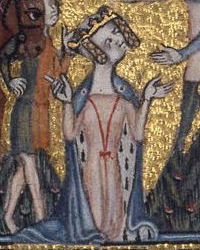
View On WordPress
#Charles VI#Count of Derby#Count of Northampton#Countess of Derby#Countess of Northampton#Duke of Bedford#Duke of Clarence#Duke of Gloucester#Duke of Lancaster#Edward III#Eleanor de Bohun#Henry Bolingbroke#Henry IV#Henry V#House of Lancaster#Isabella of Valois#Joan of Navarre#John of Gaunt#Kathryn Swynford#King of England#King of France#Mary de Bohun#medieval history#Queen of England#Richard II#Thomas of Woodstock
2 notes
·
View notes
Text
Greetings!
This is Jennifer Ritchey, we spoke yesterday about working together on my Shelton Family History in order to help you as well on information about Shelton Hall. I am going to send you all the information that I gathered. If you have any questions, please let me know via email [email protected] Thank you.
To start with I will be sending you what I know about my family history.Please keep in mind this is my ancestry through my great grandmother Annie Opal Shelton. Which is the following among other royal family members:
!.Ferreolus, Tribune of Gaul m. Clarissima Femma in 382 AD
2. Tonatius Ferreolus ( b. 310 AD- 475 AD) m. Papianilla
3.Tonatius Ferreolus "Senator" (440 AD-511AD) m. Eulalia
4.Ferreolus (Senator of Narbonne)(b.485 AD-?) m. Saint Doda of Reims
5. Ansbertus m. Billild dau.of Charibert I (Merovingian)
6. Arnoldas Bishop of Metz (b.540AD-611AD m.Unknown
7. Saint Arnulf of Metz (b.582 AD-645 AD) m. Dode
8. Ansegisel (b.602 AD-679AD) m. Saint Begga
9.Pepin II of Herstal (b.633 AD-714) m.Alpaida
10. Charles Martel (B. 688-741 AD) m. Rotrude of Hesbayer
11. Pepin the Short(b.714 AD-?) m. Bertrada of Laon
12.Charlemagne (b.748 AD-814)m. Hildegarde
13 Louis the Pious m. Judith of Bavaria
14. Charles the Bald (823 AD-877AD) m. Ermentrude
15.Judith of Flanders (b.843 AD-?)m. Baldwin I, Count of Flanders
16. Baldwin II of Flanders m. Aelfthryth dau. of King Alfred the Great
17.Arnulf I, count of Flanders (b. 890 AD-965) m. Adele of Vermandois dau. of Herbert II of Vermandois
18.Baldwin III Count of Flanders (940-962) m. Mathilde of Saxony
19. Arnulf II Count of Flanders (960-987)m. Rozala of Italy dau.of King Berenger of Italy
20. Baldwin IV Count of Flanders (980-1035 ) m.Ogive of Luxemburg
21. Baldwin V of Flanders (1012-1067) m.Adele Of France
22. Matilda of Flanders(1031-1083) m. William the Conqueror, King of England
23 Henry I, king of England (1068-1135) m. Matilda of Scotland
24. Empress Matilda(1102-1167) m. Geoffrey V, Count of Anjou(Plantagenet)
25. Henry II, King of England (b. 1133-1189) m.Eleanor of Aquitaine
26.John I, King of England (1166-1216) m. Isabella, Countess of Anjouleme
27.Henry III, King of England (1207-1272) m. Eleanor of Provence
28. Edward I, King of England (1239-1307)m. Eleanor of Castile
29. Princess Elizabeth Plantagenet of Rhuddlan, Countess of Hereford (1282-1316) m. Lord Humphrey de Bohun
30 Eleanor de Bohun (1304-1363) m. James Butler I of Ormonde
31. James Butler II of Ormonde (1331-1382)m. Lady Elizabeth Darcy
32. James Butler !!! of Ormonde (1359-1405) m.Lady Anne Welles
33. James Butler IV of Ormonde ( 1392-1452) m. Joan de Beuchamp
34. Thomas Butler VII of Ormonde (1426 -1515) m. Lad Anne Hankford
35. Lady Margaret Butler (1454-1539) m. Sir William Boleyn
36. Lady Anne Boleyn (1475-1556)m. Sir John Shelton of Shelton Hall
37. Sir John Shelton II (1504-1558)m. Margaret, dau. of Sir Henry Parker
38. Sir Ralph Shelton(1530-1580) m. Lady Mary Wodehouse
39.Sir Ralph Shelton II (1560-1628) m. Lady Jane West
40.Capt, James Shelton (1580-1668)m. Anne Herbert ( Immigrated to America?)
41. Thomas Shelton(1606-1684) m. Hannah Wood
42.Capt. James Stephen Shelton(1629-1716) m. Mary Jane Bathurst
43.John Shelton(1648-1706) m. Jane Chilton
44. Thomas Shelton(?-1738) m. Winifred King
45. Thomas Shelton(1723-1808) m. Jane Bennett
46. William "Mountain Man"(1753-1827) Shelton m. Ann Lomax
47. William Bennett Shelton(1784-1860) m. Lydia Cloud
48.Andrew Jackson Shelton Sr. m. Rachel Jane Cassady
49.Andrew Jackson Shelton Jr. m. Lucretia Earle
50. John Edgenton Shelton(1892-1922) m. Opal Mcgary
51. Annie Opal Shelton m. Robbie Ray Kisselburg
52. Roberta Knell Kisselburg m. Danny Ritchey Sr.
53 Danny Ritchey II m. Anna Maria Puebla (Spanish descent)
54 Jennifer Deann Ritchey (b.1993)(me)
I am also a descendant of a Anne Elizabeth Boleyn who was born in 1475 is a possible sister of Lady Anne Boleyn Shelton who is also a daughter of Sir Geoffrey Boleyn, descended to her through Anne Herbert, wife of Captain James Stephen Shelton of whom is also a descendant of the Boleyns.. I am also the descendant of Countess Anne Parr through Anne Herbert as well. Through Anne Herbert the wife of Captain. James Shelton, through her ancestress Countess Anne Parr,wife of William Herbert (1501-1570). I a, a direct descendant of Richard Neville(1400-1460),who is the grandson of John of Gaunt(1340-1399).
That Genealogy goes as follows: 1. John of Gaunt (1340-1399) m Katherine de Roet
2. Joan Beaufort (1379-1440) m. Ralph Neville
3. Richard Neville (1400-1460) m. Alice Montague
4. Alice Neville(1430-1503)m.Henry FitzHugh
5.Lady Elizabeth Fitzhugh(1465-1507) m. William Parr Ist Baron
6. Thomas Parr(1483-1517) m. Maud Green
7.Countess Anne Parr (1515-1552) m. William Herbert
8.Henry Herbert (1538-1601)m. Catherine Talbot
9.Hebry Herbert (1567-1601) m. Lady Seymour (1565-?)
10.Anne Herbert 1588-1684)m. James Shelton (1580-1668)
Well . have to get back to college work I really hope this would help you out, next time we speak i'll do some research about Shelton Hall.
2 notes
·
View notes
Photo

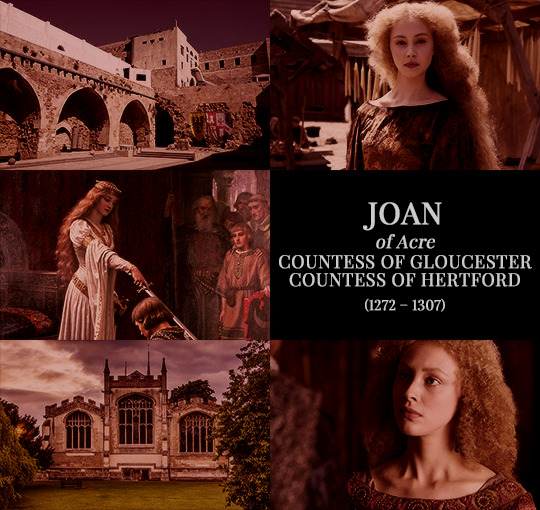

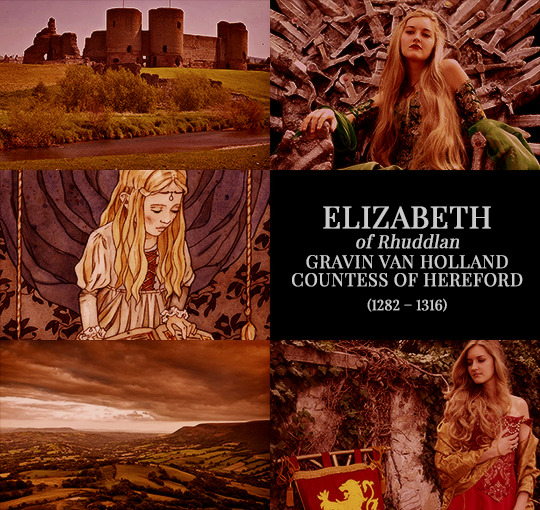

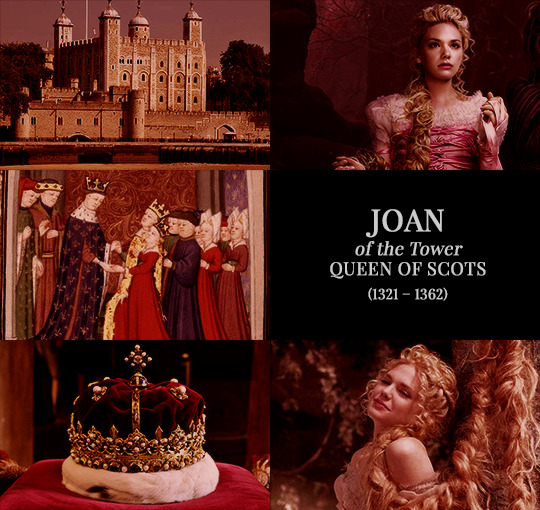
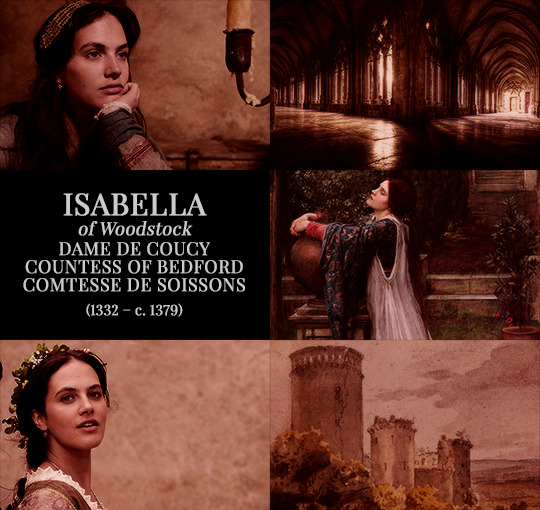
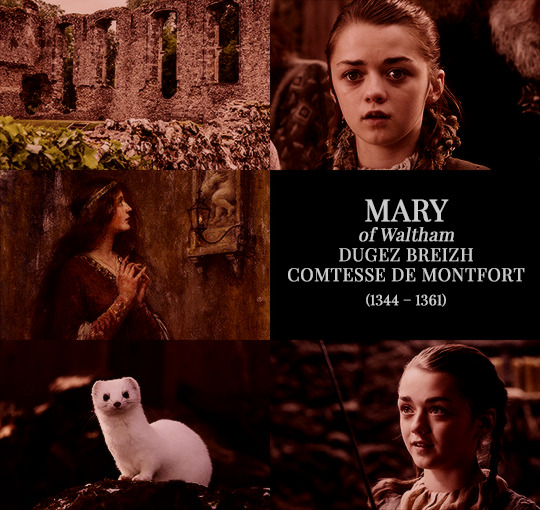
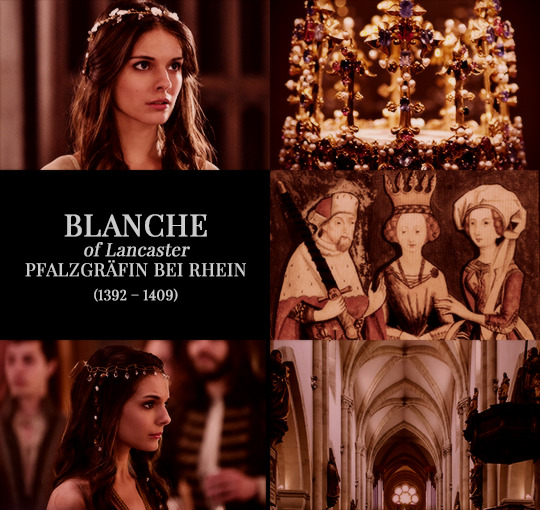
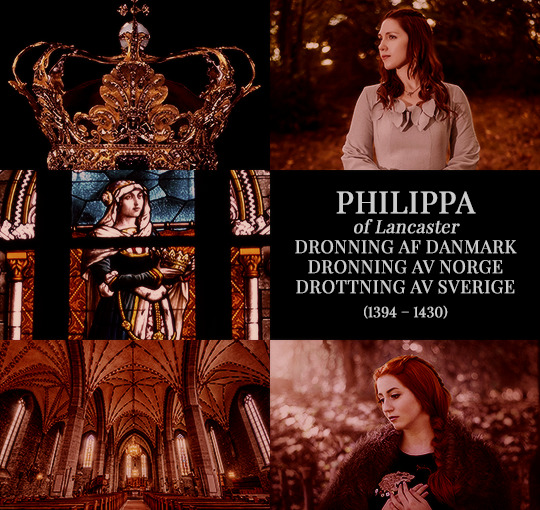
English princesses aesthetic, part II
Eleanor of Windsor, comtesse de Bar. Daughter of Edward I and Leonor de Castilla. Mother of Jehanne de Bar, Countess of Surrey. Grandmother of Aliénor de Bar, duchesse de Lorraine.
Joan of Acre, Countess of Gloucester and Hertford. Daughter of Edward I and Leonor de Castilla. Mother of Eleanor de Clare, 6th Lady of Glamorgan; Margaret de Clare, Countess of Gloucester; Elizabeth de Clare, 11th Lady of Clare; and Mary de Monthermer, Countess of Fife.
Margaret of Windsor, Hertogin van Brabant. Daughter of Edward I and Leonor de Castilla. Grandmother of Johanna, Hertogin van Brabant and Margaretha van Brabant, comtesse de Flandre.
Elizabeth of Rhuddlan, Countess of Hereford. Daughter of Edward I and Leonor de Castilla. Mother of Eleanor de Bohun, Countess of Ormonde and Margaret de Bohun, 2nd Countess of Devon. Great-grandmother of Eleanor de Bohun, Duchess of Gloucester and Mary de Bohun, Countess of Northampton.
Eleanor of Woodstock, Hertogin van Gelre. Daughter of Edward II and Isabelle de France.
Joan of the Tower, Queen of Scots. Daughter of Edward II and Isabelle de France.
Isabella of Woodstock, Countess of Bedford. Daughter of Edward III and Philippa de Hainaut. Mother of Marie Ire de Coucy, comtesse de Soissons and Philippa de Coucy, Countess of Oxford.
Mary of Waltham, dugez Breizh. Daughter of Edward III and Philippa de Hainaut.
Blanche of Lancaster, Pfalzgräfin bei Rhein. Daughter of Henry IV and Mary de Bohun.
Philippa of Lancaster, Dronning af Danmark. Daughter of Henry IV and Mary de Bohun.
#house of plantagenet#medieval#house of lancaster#historyedit#english history#european history#women's history#history#royalty aesthetic#nanshe's graphics
153 notes
·
View notes
Photo
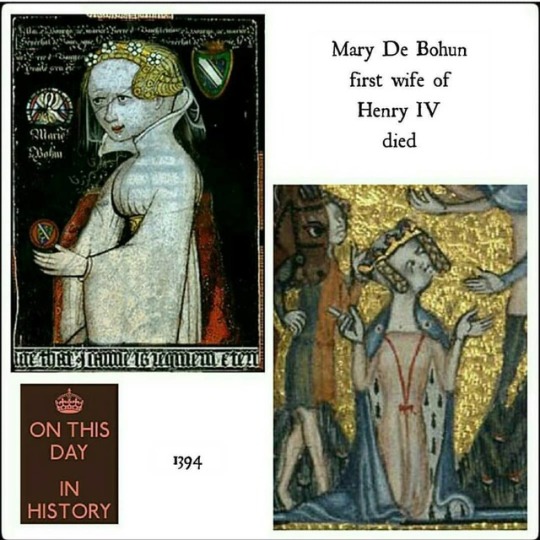
On This Day In History . 4 June 1394 . 1394 - Mary de Bohun died . . ◼ Mary de Bohun born, c. 1368, was the first wife of King Henry IV of England & the mother of King Henry V. Mary was never queen, as she died before her husband came to the throne. . 💠 Mary was the daughter of Humphrey de Bohun, 7th Earl of Hereford, & Joan FitzAlan, the daughter of Richard FitzAlan, 10th Earl of Arundel, & Eleanor of Lancaster. Through her mother, Mary was descended from Llywelyn the Great. . 💠 As a child Mary was pressured into becoming a nun. However, John of Gaunt (Mary's future father-in-law), with the aid of Mary's mother, Joan, abducted her from the convent to be married to his son, the future Henry IV. . 💠 Mary married Henry then known as Bolingbroke on 27 July 1380, at Arundel Castle. At the time of her marriage, Mary was perhaps little more than twelve years old. . 💠It was at Monmouth Castle, one of her husband's possessions, that Mary gave birth to her first two children, both boys. Henry, the surviving son, was later to become Prince of Wales when his father seized the throne from Richard II in 1399. On the death of his father in 1413, he became King of England as Henry V. . Her children were: . ▪ Henry V, King of England (1386–1422) . ▪ Thomas of Lancaster, 1st Duke of Clarence (1387–1421) . ▪ John of Lancaster, 1st Duke of Bedford (1389–1435) . ▪ Humphrey, Duke of Gloucester (1390–1447) . ▪ Blanche of England (1392–1409) married in 1402 Louis III, Elector Palatine . ▪ Philippa of England (1394–1430) married in 1406 Eric of Pomerania, King of Denmark, Norway and Sweden. . 👑 Mary de Bohun died at Peterborough Castle, giving birth to her last child, a daughter, Philippa of England. She was buried at the Church of St Mary de Castro, Leicester. . . . #OnThisDayInHistory #ThisDayinHistory #TheYear1394 #d4jun #MaryDeBohun #CountessofNorthampton #CountessofDerby #Countess #Royalty #Monarchy #HenryIV #KingHenryIV #History #EnglishMonarchy #BritishMonarchy #OnThisDay #RoyalHistory #HistoryFacts #InstaHistory #Royalfamily (at Peterborough) https://www.instagram.com/p/ByTKvvwgMPI/?igshid=17w5in2ny97ix
#onthisdayinhistory#thisdayinhistory#theyear1394#d4jun#marydebohun#countessofnorthampton#countessofderby#countess#royalty#monarchy#henryiv#kinghenryiv#history#englishmonarchy#britishmonarchy#onthisday#royalhistory#historyfacts#instahistory#royalfamily
0 notes
Text
It was Gaunt who arranged Henry's marriage. The object of his attentions was Mary, the co-heiress to Humphrey de Bohun, earl of Hereford, Essex and Northampton, who had died at the age of thirty in January 1373, leaving no sons, two underage daughters, and a very substantial inheritance. The elder daughter, Eleanor (born in 1366), was married to Gaunt's brother, Thomas of Woodstock, earl of Buckingham, probably in 1374. What now happened to Mary (born in 1369–70) was naturally a matter of considerable interest to Buckingham. As long as she remained single, the entire Bohun inheritance would fall to him; were she to marry, he would be obliged to share it with her husband. Inconveniently, other duties now deflected his attention. On 3 May 1380, he indented with the king and council to lead an expedition to Brittany with a retinue of 5,000 men. During the following two months he did what he could to ensure that the Bohun patrimony did not slip from his grasp during his absence: on 8 May he obtained a royal grant of the custody of Mary's share of the inheritance during her minority; on 22 June Eleanor came of age and Thomas performed his fealty to the king for his wife's share of the lands. Shortly before leaving he even took the precaution of bringing Mary to stay with her sister at Pleshey castle (Essex), where he arranged for her to be instructed by nuns with the intention that she should join the order of St Clare. According to Froissart, ‘the young lady seemed to incline to their doctrine, and thought not of marriage’.
Hopeful of having ensured the integrity of his inheritance, Buckingham shipped his troops to Calais and, on 24 July 1380, set out with his army on a campaign from which he would not return for nine months. No sooner had he done so than Gaunt made his move. Three days after his brother's crossing, he secured a royal grant of Mary's marriage, ‘for marrying her to his son Henry’, and shortly after this induced her mother, Joan countess of Hereford, to spirit her away from Pleshey and take her to Arundel, where the young couple were rapidly betrothed. They were married on 5 February 1381 in a service held at Countess Joan's manor of Rochford (Essex). The connivance of the king and council, who would have been aware of the blow this inflicted on Buckingham, is a measure of the financial and political leverage Gaunt exercised in Richard II's minority government. Gaunt attended and presented Mary with a ruby, as well as paying for the festivities; Henry's sisters, Philippa and Elizabeth, each gave their new sister-in-law a goblet and ewer. The king and Edmund earl of Cambridge (Gaunt's younger, and Buckingham's older, brother) may also have been there, for ten royal minstrels and four of Cambridge's minstrels received gratuities from Gaunt for enlivening the proceedings. There was nothing hasty or clandestine about the wedding.
Chris Given-Wilson, Henry IV (Yale University Press, 2016)
#mary de bohun#henry iv#joan de bohun countess of hereford#john of gaunt#elizabeth of lancaster countess of huntingdon#philippa of lancaster queen of portugal#thomas of woodstock duke of gloucester#richard ii#historian: chris given-wilson#rebecca holdorph argues for an earlier wedding date iirc#also 'induced' joan to 'spirit' mary away? i don't think you could induce joan to anything she didn't want to#(ask john holland how he knows)#froissart's account of the wedding is problematic (refer to previous post) it presents the marriage as#a struggle for custody of mary between gaunt and woodstock - mary - the stolen bride - is effectively property in the narrative#(and the perspective of other women are ellided beyond the 'aunt' who abducted her who is presented as solely wanting to please gaunt)#(and the perspective of the other child/minor in the story - 13 yr old henry)#it's possible that mary did want to be a nun but it's also possible that froissart is fictionalising her perspective
7 notes
·
View notes
Text
The survival of Mary's 1387–8 wardrobe account and a number of her devotional books makes it possible to know considerably more about her than about most aristocratic women of the fourteenth century. In 1387–8 she was based at Kenilworth, but from 1390 onwards Peterborough was her home. Henry spent a good deal of his time at Peterborough in the intervals between his travels and his public engagements, and often sent Mary gifts of cloth or delicacies such as fruit and nuts, oysters, mussels and sprats when he was away. Sometimes she travelled with him, but for the most part her social circle comprised other noble women. She remained close to her mother, Joan countess of Hereford, and her sister, Eleanor duchess of Gloucester, exchanging gifts, livery robes and visits with them, as she did with Gaunt's duchess, Constanza, his mistress, Katherine Swynford, and Katherine's daughter, Joan (Beaufort). A particular friend in 1387–8 was Margaret, wife of William Bagot, a confidence conducive to their husbands' relationship. Mary certainly did not shut herself off from public affairs: she kept abreast of developments during the Appellant rising, and in September 1388 William Bagot sent her a message with news of the Cambridge parliament. She also received messengers from Gaunt in Bayonne and his ally the king of Portugal, the husband of her sister-in-law Philippa.
However, it was her musical, artistic and religious interests that are most likely to have influenced Henry, for Mary came from a family more closely identified with the discerning patronage of art and literature than any other in fourteenth-century England. Humphrey de Bohun, earl of Hereford and Essex (d.1361) – ‘a retiring, priest-dominated bachelor’ – was an early patron of the alliterative revival in English vernacular poetry in the mid-fourteenth century, while his nephew Humphrey (Mary's father) was a patron of Froissart. Mary herself paid for a Latin primer to be bound in London, for strings for a harp (cithara), and for a ruler with which to line parchment ‘for singing notes to be added’, suggesting that she did not just sing and play but also composed music, as Henry may have done. He too owned a harp and bought a ‘pipe called a recorder’ in the same year. They kept ten minstrels in their household and regularly rewarded itinerant pipers, fiddlers, trumpeters, clarioners, nakerers (cymbal-players). A payment to ‘singing clerks’ indicates an interest in polyphony as well as minstrelsy.
Chris Given-Wilson, Henry IV (Yale University Press, 2016)
#mary de bohun#henry iv#historian: chris given-wilson#joan de bohun countess of hereford#eleanor de bohun duchess of gloucester
6 notes
·
View notes
Text
I was looking at reviews of Lucy Freeman Sandler's study of the Lichtenthal Psalter and it just made me Feel Things™, in terms of looking back at the past and seeing the imprint of something so human.
Brief Primer: The Lichtenthal Psalter is believed to have been commissioned by Joan de Bohun (nee Fitzalan) for her daughter, Mary, on occasion to her marriage to the future Henry IV in 1380/1381. It is now located in Cistercian convent of Lichtenthal in Germany and it is generally believed that it came to Germany with Mary's daughter, Blanche, when she married Louis, Elector Palatine, in 1402, before being passed to the convent by her husband's great granddaughter in 1503. On a related note, there are two de Bohun manuscripts in Copenhagen's Det kongelige Bibliotek that are generally believed to have come to Denmark with Mary's other daughter, Philippa, on occasion of her marriage to Eric of Pomerania, but the provenance of the manuscripts in Denmark doesn't date far enough (iirc, it only goes back to the 17th or 18th century) to confirm that belief.
Already that makes me emotional - the book that was made for 10-year-old Mary's marriage accompanying her 10-year-old daughter on her marriage, who had been two when Mary died.
From Maidie Hilmo's review in Medieavistik, Vol 20 (2007):
This study has uncovered a number of fascinating thematic in the illustrations of the biblical narratives in the Lichtenthal Psalter. An example concerns the intended female recipient of this book. In the illustrations considerable emphasis is placed on birth scenes, while an effort is made to censor scenes such as Noah's nakedness.
And Lydia Dennisson's review in Speculum, vol. 81, no. 3 (2006):
Conversely, Sandier has discovered that the artists, principally [John de] Tye, "edited" the text so that biblical episodes perceived to be especially significant coincide with the main textual divisions: a scriptural image may be used to reinforce a topical point and the topical image, in turn, comment on the scriptural. She speculates as to whether in his selection John de Tye may have had a particular focus; for instance, there are several prominent scenes of childbirth, and any scenes that might be perceived as negative, or derogatory to women, are omitted.
Like! The thought and care that went into tailoring the book to be make potentially appropriate for a 10-year-old girl! The censoring of Noah's junk! The editing out of scenes derogatory to women! It just feels so human. Whether this was a typical adjustment for if the intended reader was young and/or female, John de Tye's specific intervention or because of specific instructions from the book's commissioner (Joan) is unrecoverable, I imagine, but I like to imagine that it came from Joan, specifically, and love the image of her standing over them to make sure that they do what she says.
I don't have the book (yet) to check what Sandler says about Noah's junk being censored but in the context of Froissart's claim that Mary's marriage to Henry was "instantly consummated"... I feel Froissart's claim is likely not referring to sexual consummation, or if it was, it wasn't true. At the very least, it indicates that Joan did not want Mary exposed to dicks in art, much less in real life, at this age.
(also: if the psalter was finished by the time of Mary's wedding and was made at the manuscript workshop at Pleshey - one of Thomas of Woodstock's principle residences - which seems to be likely, this suggests that this wasn't as secretive as Froissart depicts.)
Hilmo:
The pictorial program begins with a calendar illustrating the Labours of the Months and the signs of the zodiac. Sandler points out that a visual topos for adolescence is transferred to a zodiacal context in the illustration for Virgo, which depicts "a sun shining over a girl combing her hair while looking in a mirror" (131). It is part of this author's restraint that she allows the reader to make the observation that this might have been one of the ways in which this manuscript was personalized for Mary de Bohun.
I don't have any commentary here but it's just..so... 🥺Just the thought and care going into customising it?
Hilmo:
In the bottom of the Beatus page, echoing the Creation scenes at the top, Eve bears Abel in a cave-like setting beside heraldic displays in the border. In historiated initials, fruit- fulness is also given prominence in connection with the births of Esau, Jacob, and Moses.
Since this psalter was commissioned by Mary de Bohun's mother, Joan Fitzalan, at the time of Mary's marriage, it is suggested that such scenes in this psalter were to prepare the young girl for the desired outcome of her marriage and to serve educational as well as spiritual purposes. Sandler states that the armorial displays "proclaim the connection of all the Bohuns - past and present - with kings and princes, a view of the high estate of the family that commissioner and artist hoped to transmit."
As someone who imagines Mary as especially fulfilled by motherhood, this is so, so interesting to know. Like, yes, it's a bit... eh in terms of imagining Mary as a girl/woman that must have children but it was the norm/expectation for married women. But it does help suggest how Mary would have initially imagined and then framed her experiences of motherhood which is so useful.
Also, the focus on the lineage is very interesting in the context of Blanche's only known son who was nicknamed "the English".
Anyway I cracked and ordered the book for myself as a belated Christmas present.
#joan de bohun countess of hereford#mary de bohun#henry iv#blanche of england#blog#manuscripts#the lichtenthal psalter#bohun manuscripts
3 notes
·
View notes
Text
Than Kyng Herry [V] sent to Dame Kateryn Swynfor, Countesse of Herforde, whiche was tho a wel-gouerned woman, & kept þe most worshipful housolde, & þe best rewlyd þat was within þe londe ; and to her he sent for men þat were of good disposicyoun; & she sent hym xij Ientylmen of sad gouernaunce. and so this gracious Kyng forsoke al wyldnes, and toke hym to good gournaunce, and kept streytly his lawys with ryghtwisnes & Iustise
The Brut or The Chronicles of England, ed. F. W. D. Brie, 2 vols., EETS OS 131 and 136 (London, 1908)
n.b. Katherine Swynford died in 1403, 10 years before Henry V ascended the throne and was never Countess of Hereford but Duchess of Lancaster. Gwilym Dodd in "Henry V’s Establishment: Service, Loyalty and Reward in 1413" (Henry V: New Interpretations, York Medieval Press, 2013), states that the author of The Brut confused Katherine with Joan de Bohun (nee Fitzalan), Countess of Hereford, Henry V's last surviving grandparent. Dodd also argues that the story of Henry V dismissing most of his household is not likely to be true.
#henry v#katherine swynford#joan de bohun countess of hereford#the brut#primary source#historian: gwilym dodd#household
6 notes
·
View notes
Text
The same was found in later reigns; the Crown had inbuilt advantages which an energetic king could exploit when it came to securing land. Anne, countess of Stafford had little option but to accept the new division of the Bohun estates as laid down by Henry V. Joan, dowager countess of Hereford, who had held dower in the Bohun lands since the last earl's death in 1373, died in 1419. Henry V then brought a case for the redivision of the inheritance on the grounds that the profits of his share, inherited from his mother Mary de Bohun, were 100 marks less than those derived from the pourparty of Anne's mother Eleanor. Anne's arguments for accepting the original division were overruled and a new partition drawn up. Although this ostensibly still gave Anne greater profits than Henry, her responsibility for arrears due to the king from Brecon, which was allotted to her, and the growing problems of securing revenues from Welsh lordships, meant that she probably lost on the deal. Anne was also anxious to secure lands held by her father Thomas of Woodstock, and here persistence and determination paid off in the end and she secured the lordships of Oakham and Holderness. It is significant that when her father's attainder was reversed by Henry IV he 'forgot' Anne's claim and granted Holderness to his son Thomas, whose widow refused to surrender the lordship after his death in 1421. It appears that Anne did not secure the lordship until the year before she died.
Jennifer Ward, English Noblewomen in the Later Middle Ages
#rebecca holdorph has a breakdown of the bohun inheritance split in her thesis and henry v is correct that mary got less money than eleanor#(though it is debatable whether it was 'fair' for henry v to have gone after an extra 100 marks when he was king)#(that said anne was very wealthy herself so ¯\_(ツ)_/¯ )#henry v#joan de bohun countess of hereford#anne countess of stafford#mary de bohun#thomas duke of clarence#margaret holland duchess of clarence#thomas of woodstock duke of gloucester#henry iv#historian: jennifer ward
4 notes
·
View notes
Text
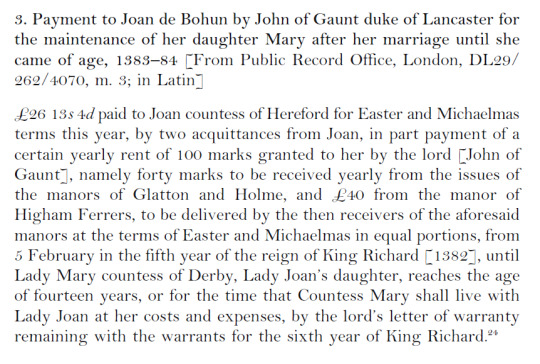
Payment to Joan de Bohun by John of Gaunt duke of Lancaster for the maintenance of her daughter Mary after her marriage until she came of age, 1383–84, from Jennifer C. Ward (translator and editor), Women of the English Nobility and Gentry: 1066-1500 (Manchester Medieval Sources, Manchester University Press, 1995)
2 notes
·
View notes
Text
The first years of the marriage were spent with Mary still living separately in her mother’s custody. It has been suggested that Mary gave birth to a short-lived son in 1382, though this is debatable. It is possible that, as Thomas of Woodstock had good reason to contest the marriage, Mary and Henry were urged to consummate even though she was very young and she unexpectedly became pregnant. Froissart’s reference to the marriage being ‘consummated immediately’ is unhelpful, as it is unclear whether he is suggesting a sexual consummation or merely that the ceremony was performed. Although there might have been good reason to have the marriage consummated, there is little proof that Mary had a child. The evidence given for this, a line in Bolingbroke’s receiver general’s account from that year simply reads: ‘Given to an esquire of my lord Buckingham, called Westcome, on my lord of Lancaster’s [Gaunt’s] orders, 66s. 8d., for bringing my lord the news that his lady was delivered of a son’ and notes further that Bolingbroke later gave gifts of money to the baby’s nurse and governess. This could refer to a child of Mary de Bohun and Henry of Bolingbroke, but is considerably more likely to indicate it was Eleanor de Bohun who had given birth to a son – the original Latin allows both translations. The birthdate for Eleanor and Thomas’s eldest son Humphrey is generally given as 1381-82, so this reference could easily refer to his birth.
Multiple records attest to the fact that after the wedding, Mary returned to her mother’s custody. Beginning in January 1382, Gaunt paid Joan de Bohun 100 marks annually to cover Mary’s expenses. The payments were to be made until either Mary turned fourteen, or until she departed her mother’s custody. This is a clear indication that Mary was not expected to take up her duties as a wife until she reached some sort of maturity, which was considered to be at age fourteen. The reference to the possibility of Mary leaving her mother’s custody before this point could be an acknowledgement that if she reached childbearing age (probably indicated by first menstruation) before fourteen, she might be expected to join Henry’s household earlier. Apparently Joan was also in a position to bargain, as evidenced by the provision in the grant that if her payments should go into arrears for more than three months, she would be leased a certain set of manors to cover the amount she was owed.
Rebecca Holdorph, ‘My Well-Beloved Companion’: Men, Women, Marriage and Power in the Earldom and Duchy of Lancaster, 1265-1399 (University of Southampton, PhD Thesis)
#mary de bohun#henry iv#john of gaunt#joan de bohun countess of hereford#historian: rebecca holdorph#tw child pregnancy mention#or...just hear me out - mary might have stayed longer with her mother?#esp. since the first evidence of henry and mary co-habiting is that their first certain child was conceived around mary's 15th birthday#less 'putting a girl on the medieval conveyor belt to broodmare land as soon as she's breedable'#especially since we know it wasn't very common for a medieval girl to get pregnant in their early teens#and more 'maybe joan wanted to be sure mary was ready for married life and not bound by an arbitrary figure'
1 note
·
View note
Text

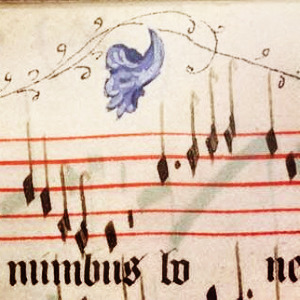


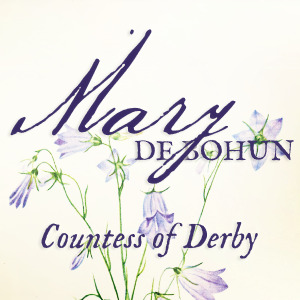




Mary de Bohun, Countess of Derby
Mary de Bohun was probably born around 22 December 1370 to Humphrey de Bohun and Joan Fitzalan, Earl and Countess of Hereford. As her father had no son, she and her elder sister, Eleanor, became the heiresses of his wealthy earldom. Eleanor married Thomas of Woodstock, the youngest son of Edward III, and according to Froissart, Woodstock intended Mary to enter a nunnery so he would inherit the entire earldom. This was not to be. In late 1380 or early 1381, Mary married John of Gaunt's son and heir, Henry Bolingbroke, the future Henry IV. The marriage appears to have happy as they shared similar interests and often spent time together. The story that Mary gave birth to a short-lived son in 1382, when she would have been only 11, is now believed to be a myth brought into being by a mistranslated text referring to her sister giving birth to a son. Mary's first child was the future Henry V, born 16 September 1386. Four more children soon followed: Thomas, Duke of Clarence (29 September 1387), John, Duke of Bedford (20 June 1389), Humphrey, Duke of Gloucester (3 October 1390) and Blanche, Electress Palatine (25 February 1392). Mary died either giving birth to her sixth and final child, Philippa, Queen of Norway, Denmark and Sweden, or from complications afterwards, on 1 July 1394, when she was only 23 years old. Mary was buried on 6 July 1394 in the Church of the Annunciation of Our Lady of the Newarke in Leicester. The church and her tomb was destroyed in the Reformation.
A little of her personality can be reconstructed. She was interested in music, playing the harp or cithara, and she bought a ruler to line parchment for musical notation, suggesting she may have also composed music.Such an interest was shared by both her husband and eldest son, one or both of whom were the 'Roy Henry' who composed two mass movements. She maintained a close contacts with other noblewomen, not only her mother and sister, but Constanza of Castile, Katherine Swynford and Margaret Bagot, suggesting that she may well have been more politically aware and involved than what is generally believed. She may have also continued the de Bohun of patronising manuscript illuminators. A number of illuminated manuscripts believed to belong to her or her sister are some of the most celebrated late medieval English manuscripts.
Mary never became Duchess of Lancaster, let alone Queen of England, but it was her family's badge of the swan that became associated with the Lancastrian kings, most famously borne by her eldest son, Henry V. One of Henry V's first acts as king was to order a copper effigy for her tomb, while in the charter of his Syon foundation, he required that the soul of "Mary … our most dear mother", among others, be prayed for in a daily divine service. Her third son, John, recorded her anniversary into his personal breviary, while her daughters may have each carried manuscripts belonging to her with them when they left England to be married. Despite the brevity of her life, Mary was remembered long after her death.
Sources: Paris, Bibliothèque Nationale, MS Lat. 17294, Chris Given-Wilson, Henry IV (Yale University Press 2017), Ian Mortimer, The Fears of Henry IV (Vintage 2008), John Matusiak, Henry V (Routledge 2012), Calendar of the Patent Rolls: Henry IV. Vol. I. A. D. 1399-1401, Calendar of Close Rolls 1381-1385, Rebecca Holdorph, 'My Well-Beloved Companion': Men, Women, Marriage and Power in the Earldom and Duchy of Lancaster, 1265-1399, University of Southampton, PhD Thesis, Marina Vidas, The Cophenhagen Bohun Hours: Women, Representation and Reception in Fourteenth Century England (Museum Tusculanum Press 2019)
79 notes
·
View notes
Text

Grant by Henry V to his grandmother, Joan de Bohun countess of Hereford, of hunting rights in Hatfield Forest, 1414, from: Jennifer C. Ward (translator and editor), Women of the English Nobility and Gentry: 1066-1500 (Manchester Medieval Sources, Manchester University Press, 1995)
2 notes
·
View notes